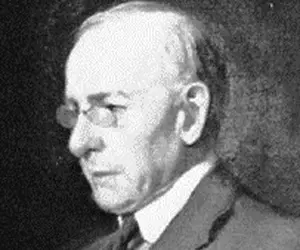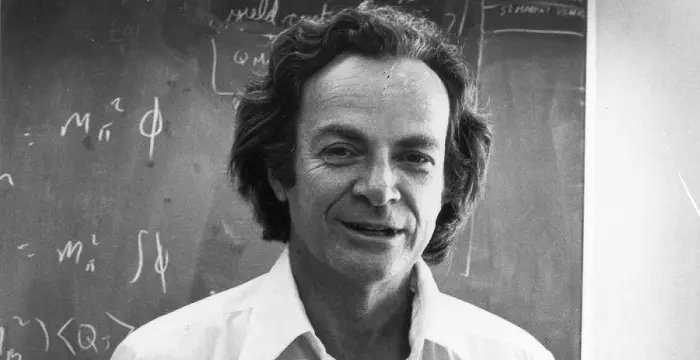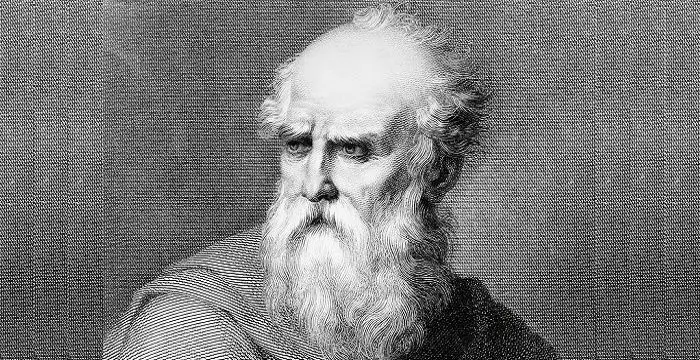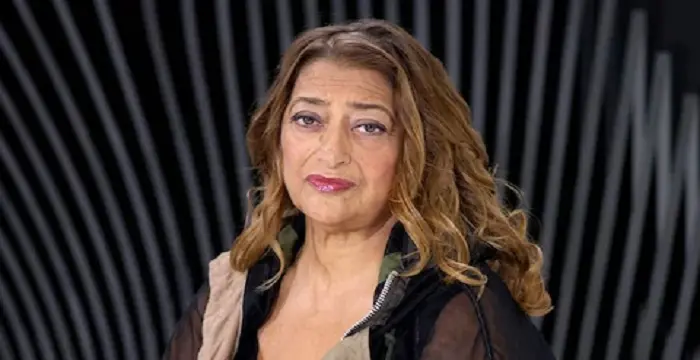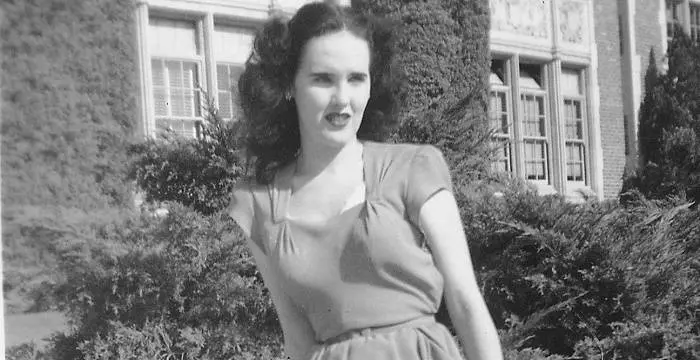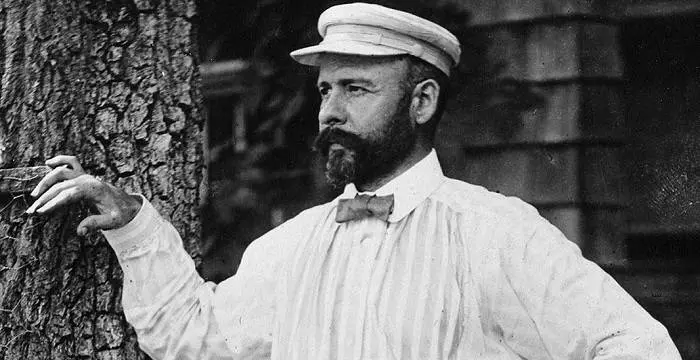
Louis Sullivan - Pioneering Architect, Family and Childhood
Louis Sullivan's Personal Details
Louis Sullivan was a pioneering architect who is known as the "father of skyscrapers" and "father of modernism"
| Information | Detail |
|---|---|
| Birthday | September 3, 1856 |
| Died on | April 14, 1924 |
| Nationality | American |
| Famous | Massachusetts Institute Of Technology, Architects, Pioneering Architect |
| City/State | Boston |
| Known as | Louis H. Sullivan |
| Universities |
|
| Notable Alumnis |
|
| Birth Place | Boston |
| Gender | Male |
| Sun Sign | Virgo |
| Born in | Boston |
| Famous as | Pioneering Architect |
| Died at Age | 67 |
Louis Sullivan's photo
Who is Louis Sullivan?
The American architect Louis Sullivan is referred to as the "father of skyscrapers". He attended the Massachusetts Institute of Technology and the Beaux-Arts in Paris. His career reached its zenith during his partnership with Dankman Adler. At first, the partners designed many theatres, the most famous example of their work being the Auditorium Building in Chicago. The Wainwright Tomb, the mausoleum designed by Sullivan is regarded as a masterpiece. These buildings came at a time when steel was used to give strength to buildings, unlike before when the buildings were constructed with very thick “load-bearing” walls. Sullivan adapted by creating high-rises very different from the ones that were being constructed along historical styles. He emphasized the height, keeping in mind the purpose of the construction. He believed in the Roman architect, Marcus Vitruvius Pollio’s credo "form ever follows function", stressing on use rather than utility. But, he also used ornamentations as seen in the Carson Pirie Scott store, and the semi-circular arch was his favorite feature. His design of the polychrome modern Transportation Building earned him accolades for originality. After his partnership with Adler broke, he did not do well. He became erratic, undependable, impersonal, and an alcoholic. He became an inspiration for other Chicago architects such as Frank Lloyd Wright, Richard Nickel and Crombie Taylor.
// Famous Massachusetts Institute Of Technology
Dolph Lundgren
Dolph Lundgren is a famous Swedish actor, film-maker, screenwriter and martial artist. This biography offers detailed information about his childhood, family, personal life, etc.
Joseph E. Stiglitz
Joseph E. Stiglitz is a Nobel Prize winning American economist. Check out this biography to know about his childhood, family life, achievements and other facts related to his life.
Richard Feynman
Richard Feynman was a Nobel Prize winning American physicist who proposed the theory of quantum electrodynamics. To know more about his childhood, career, profile and timeline read on
Childhood & Early Life
Louis Henry Sullivan was born on September 3, 1856 to Patrick Sullivan and Andrienne List. His parents had immigrated to America in the late 1840s from Ireland and Switzerland respectively. He had an older brother, Albert Walter.
Sullivan studied in public schools in Boston, and spent considerable time on his grandparents’ farm in South Reading. When his parents transferred to Chicago in 1869, he preferred to remain with his grandparents.
In 1872, he joined the Massachusetts Institute of Technology (MIT). He, however, left after his first year, planning to either study at the École des Beaux-Arts in Paris or be an architect’s apprentice.
Following the suggestion of Richard Morris Hunt, a successful architect, he worked with the Philadelphia firm of Furness and Hewitt. In 1873, he was employed by architect, William Le Baron Jenney in Chicago.
In 1874, he got enrolled at Beaux-Arts in Paris, but was irregular in his studies. He remained in Paris for a year and was an apprentice to the architect Émile Vaudremer.
Career
Returning to Chicago in 1875, Sullivan became a draftsman with Joseph S. Johnston & John Edelman. He designed the interior decorative "fresco secco" stencils (stencil applied on dry plaster) of the Moody Tabernacle.
In 1879, he joined Dankmar Adler as his employee, and soon became a partner in his firm. They became famous as experts in theatre architecture, first. Their designs found favor in Colorado and Washington.
The company’s theatre architecture phase ended with the 1889 Auditorium Building in Chicago, which consisted of a 4,200-seat theater, a hotel, an office building crowned by a 17-story tower, and commercial storefronts.
In the 1890s, the partners designed The Schiller Building, the Chicago Stock Exchange Building, the Guaranty or Prudential Building, New York, and the Carson Pirie Scott Department Store, Chicago.
His masterpiece, the Wainwright Tomb, a mausoleum in Bellefontaine Cemetery in St. Louis, constructed for Charlotte Dickson Wainwright in 1892, was listed on the National Register of Historic Places, and became a St. Louis Landmark.
In 1893, Sullivan designed the polychrome modern Transportation Building, for the White City", the World's Columbian Exposition in Chicago. Its multicolored façade and the huge, arched Golden Doors were marked deviations from the existing style.
When business declined owing to the Panic of 1893, a serious economic depression in America, the two partners broke up. Sullivan faced severe financial problems, compounded by his alcoholism and unfriendly behavior.
During his latter career, his most noteworthy projects were seven banks in many small Midwestern towns, beginning with the National Farmers’ (now Security) Bank in Owatonna, Minnesota.
The Merchants’ National Bank in Grinnell, Iowa, completed in1914, has a relatively serious form, with intricate ornament. His last project was the facade for the Krause Music Store in Chicago, eight years later.
In 1924, his autobiographical work, ‘The Autobiography of an Idea’, describing his childhood, and early career, and 19 plates for A System of Architectural Ornament According with a Philosophy of Man’s Powers, were published.
Major Works
One of the earliest skyscrapers in the world, the 10-storeyed Wainwright Building, in St. Louis, designed by Sullivan, soared vertically from ground to cornice. It is one of "10 Buildings That Changed America".
The classic Carson, Pirie, Scott and Company Building (the Sullivan Center), in Chicago had a corner visible from two avenues, designed by him. The ornamentation above the entrance was a distinct feature.
Awards
In 1844, Louis Sullivan was posthumously awarded the AIA Gold Medal by the American Institute of Architects in acknowledgment of his of enduring contribution to the theory and practice of architecture.
Personal Life & Legacy
In 1899, he married Mary Azona Hattabaugh, known as Margaret, a 27-year-old divorcee, fifteen years younger than him. She left him 10 years later - the couple was childless.
Trivia
At the time of its publication, some people felt that Henry Cameron, the main character in "The Fountainhead," Ayn Rand's novel, was inspired by this American architect.
According to this architect, "All practical demands of utility should be paramount as basis of planning and design; ...no architectural dictum, or tradition, or superstition, or habit should stand in the way."
// Famous Architects
Vitruvius
Vitruvius was a Roman architect, author, and military engineer during the 1st century BC. Check out this biography to know about his childhood, family life, achievements and fun facts about his life.
Rudolf Steiner
Rudolf Steiner introduced groundbreaking ideas in realms of spirituality, art, education and agriculture. Check out this biography to know about his childhood, family life, achievements and other facts related to his life.
Zaha Hadid
The famous Iraqi-British architect Zaha Hadid is known for her designs of the ‘Rosenthal Center for Contemporary Art’ and ‘Heydar Aliyev Center’. To know more about her childhood, profile, career and timeline read on.
Louis Sullivan biography timelines
- // 1844In 1844, Louis Sullivan was posthumously awarded the AIA Gold Medal by the American Institute of Architects in acknowledgment of his of enduring contribution to the theory and practice of architecture.
- // 3rd Sep 1856Louis Henry Sullivan was born on September 3, 1856 to Patrick Sullivan and Andrienne List. His parents had immigrated to America in the late 1840s from Ireland and Switzerland respectively. He had an older brother, Albert Walter.
- // 1869Sullivan studied in public schools in Boston, and spent considerable time on his grandparents’ farm in South Reading. When his parents transferred to Chicago in 1869, he preferred to remain with his grandparents.
- // 1872In 1872, he joined the Massachusetts Institute of Technology (MIT). He, however, left after his first year, planning to either study at the École des Beaux-Arts in Paris or be an architect’s apprentice.
- // 1873Following the suggestion of Richard Morris Hunt, a successful architect, he worked with the Philadelphia firm of Furness and Hewitt. In 1873, he was employed by architect, William Le Baron Jenney in Chicago.
- // 1874In 1874, he got enrolled at Beaux-Arts in Paris, but was irregular in his studies. He remained in Paris for a year and was an apprentice to the architect Émile Vaudremer.
- // 1875Returning to Chicago in 1875, Sullivan became a draftsman with Joseph S. Johnston & John Edelman. He designed the interior decorative "fresco secco" stencils (stencil applied on dry plaster) of the Moody Tabernacle.
- // 1879In 1879, he joined Dankmar Adler as his employee, and soon became a partner in his firm. They became famous as experts in theatre architecture, first. Their designs found favor in Colorado and Washington.
- // 1889The company’s theatre architecture phase ended with the 1889 Auditorium Building in Chicago, which consisted of a 4,200-seat theater, a hotel, an office building crowned by a 17-story tower, and commercial storefronts.
- // 1892His masterpiece, the Wainwright Tomb, a mausoleum in Bellefontaine Cemetery in St. Louis, constructed for Charlotte Dickson Wainwright in 1892, was listed on the National Register of Historic Places, and became a St. Louis Landmark.
- // 1893In 1893, Sullivan designed the polychrome modern Transportation Building, for the White City", the World's Columbian Exposition in Chicago. Its multicolored façade and the huge, arched Golden Doors were marked deviations from the existing style.
- // 1893When business declined owing to the Panic of 1893, a serious economic depression in America, the two partners broke up. Sullivan faced severe financial problems, compounded by his alcoholism and unfriendly behavior.
- // 1899In 1899, he married Mary Azona Hattabaugh, known as Margaret, a 27-year-old divorcee, fifteen years younger than him. She left him 10 years later - the couple was childless.
- // 1914The Merchants’ National Bank in Grinnell, Iowa, completed in1914, has a relatively serious form, with intricate ornament. His last project was the facade for the Krause Music Store in Chicago, eight years later.
- // 1924In 1924, his autobiographical work, ‘The Autobiography of an Idea’, describing his childhood, and early career, and 19 plates for A System of Architectural Ornament According with a Philosophy of Man’s Powers, were published.
// Famous Boston peoples
Temple Grandin
Temple Grandin is a well-known American writer, autistic activist and animal expert. This biography profiles her childhood, life, achievements, career and timeline
Emily Greene Balch
Emily Greene Balch was an American economist, sociologist and pacifist who won the 1946 Nobel Peace Prize. This biography of Emily Greene Balch provides detailed information about her childhood, life, achievements, works & timeline.
Nic Wallace
Check out all that you wanted to know about Nic Wallace, the famous American Instagram star; his birthday, his family and personal life, his girlfriends, fun trivia facts and more.
Barbara Daly Baekeland
Barbara Daly Baekeland was a gorgeous American model and socialite who was murdered ruthlessly by her own son. Check out this biography to know about her birthday, childhood, family life and fun facts about her.
Black Dahlia
Black Dahlia is the nickname given by the press to Elizabeth Short, after she was brutally murdered and her naked body was discovered, separated in two parts from the waist, in a vacant lot in Leimert Park, Los Angeles in early 1947.
Patty Mayo
Patty Mayo is an American YouTuber recognized for his bounty hunting series. Check out this biography to know about his birthday, childhood, family life, achievements and fun facts about him.
Louis Sullivan's FAQ
What is Louis Sullivan birthday?
Louis Sullivan was born at 1856-09-03
When was Louis Sullivan died?
Louis Sullivan was died at 1924-04-14
Where was Louis Sullivan died?
Louis Sullivan was died in Chicago
Which age was Louis Sullivan died?
Louis Sullivan was died at age 67
Where is Louis Sullivan's birth place?
Louis Sullivan was born in Boston
What is Louis Sullivan nationalities?
Louis Sullivan's nationalities is American
What was Louis Sullivan universities?
Louis Sullivan studied at Massachusetts Institute Of Technology (MIT), Massachusetts Institute of Technology, The English High School
What was Louis Sullivan notable alumnis?
Louis Sullivan's notable alumnis is Massachusetts Institute Of Technology (MIT)
What is Louis Sullivan's sun sign?
Louis Sullivan is Virgo
How famous is Louis Sullivan?
Louis Sullivan is famouse as Pioneering Architect
